The latest findings from our 8th Annual Cramp Survey add further evidence to a message that we've heard A LOT from endurance athletes in recent years...
Cramp Really Affects My Performance.
In 2024, more than 600 athletes took the survey. 73% said that they've experienced Exercise-Associated Muscle Cramps (EAMCs) 'sometimes' or 'often', with 22% cramping rarely and just 5% reporting that they'd never been afflicted by cramps (the lucky so-and-so's...).
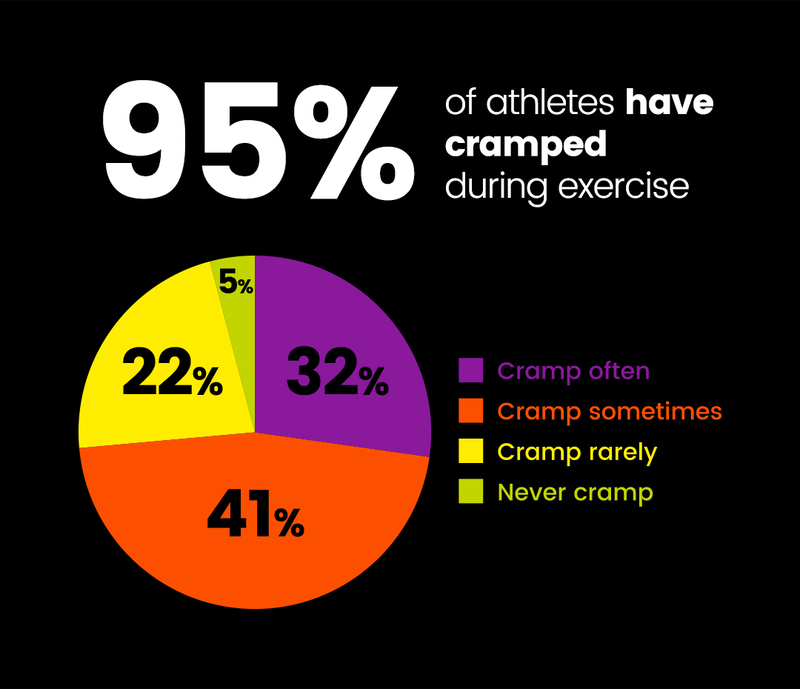
What causes cramp?
It's worth taking a step back and considering where the current literature stands on what exactly causes cramps. The cramping landscape has traditionally been dominated by two competing theories...
1. Neuromuscular Theory - cramping occurs due to 'electrical misfiring' when your muscles are overworked and fatigued.
2. Dehydration Theory - losing a lot of water and sodium through sweating during exercise causes fluid shifts in the body that in turn causes cramps.
More recently, studies have suggested a multitude of factors and a multi-factorial model of EAMC.
Our survey results support this multi-faceted stance...
Which factors contribute to cramp?
When we asked athletes what they think causes their cramp, 39% cited electrolyte imbalance, 29% blamed fatigue or lack of training volume / specificity, whilst others felt that genetics, stress, injury or lack of sleep contributed to their cramping problems.
On the subject of sleep, Toronto Blue Jays baseball player, Yusei Kikuchi, went viral when he blamed only getting 11 hours of sleep, instead of his usual 14 hours, for cramping during a MLB match!
Whilst sleep was cited as a major cause of cramp by 1% of our survey cohort, we look at three common factors that seemed to lead to our survey respondents cramping up more often: sport type, duration, and sweat...
1. Cyclists are more likely to cramp than triathletes and runners
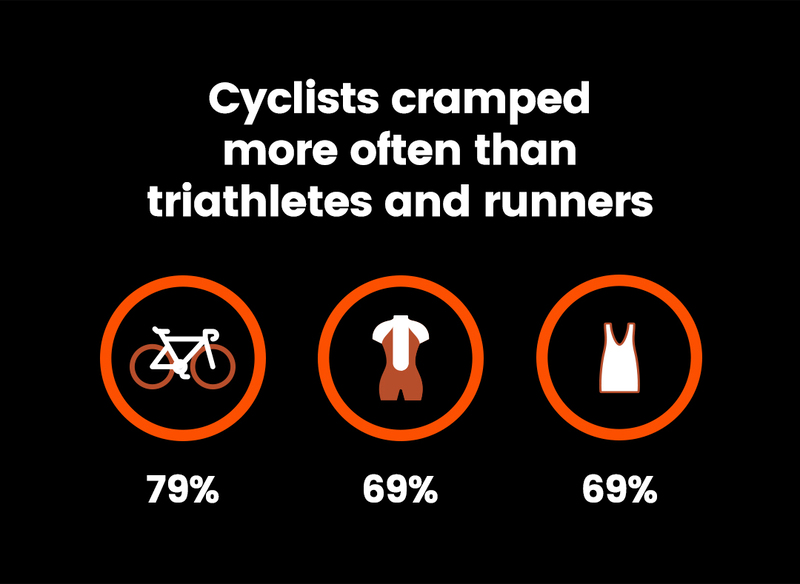
This supports results from previous editions of the survey where cyclists appeared to cramp up more frequently than runners and triathletes.
We have a few working hypotheses for why this might be, but no definitive answer. Could it be that cyclists are made of tougher stuff and are more willing to push their muscles to the point of failure?!
There are the mechanics of repeatedly pedalling and the effect on muscles to consider. Plus, we looked at whether cyclists cramped more often because they were taking part in longer endurance events, but 31% of cyclists said that their cramps occurred during events lasting 4+ hours, compared to 35% of triathletes and 34% of runners. In future surveys, we'll look to enhance this section of the survey to include more time options beyond four hours to get greater granularity with how long athletes are exercising when their cramps strike.
2. Cramping occurs more often in longer events
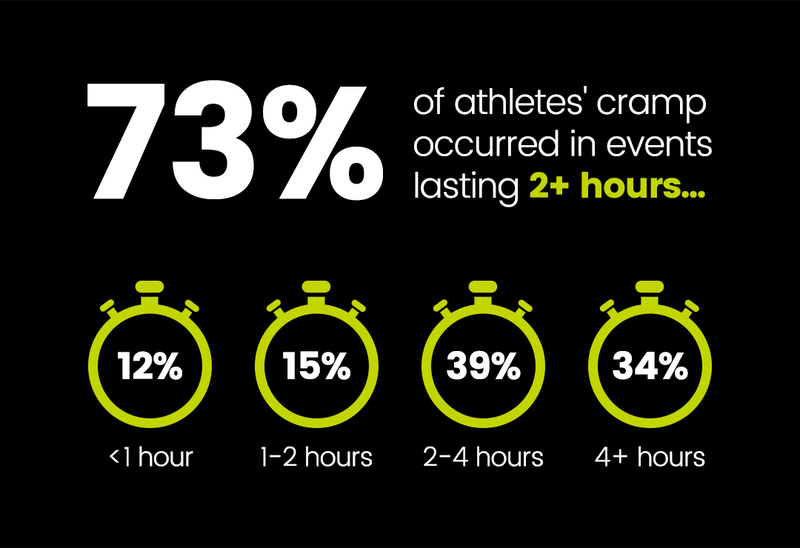
As you'd expect, muscles will become more fatigued and damaged the longer you go on, and there's a greater chance of dehydration and electrolyte imbalance occurring. These are two ingredients that seem to be high on most athletes' cramping recipe cards.
We wondered whether more inexperienced athletes were likely to cramp more often due to lack of physical conditioning to the nuances of their sport. However, 48% of athletes who cramped sometimes or often had been participating in their sport for more than six years; 35% for 3-5 years, 12% for 1-2 years, and just 4% had been participating for under a year.
3. Sweatier and saltier athletes cramp more often
Athletes with high sweat rates (i.e. those who lose lots of fluid through sweat) seem to cramp more often.
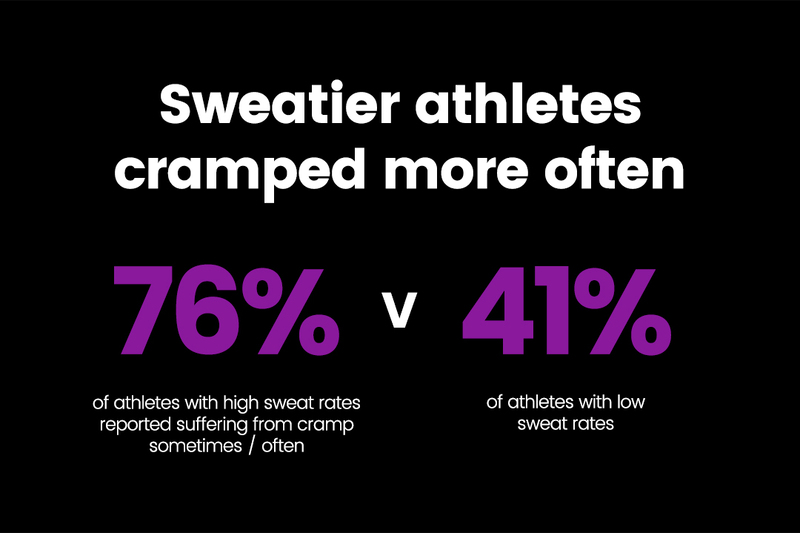
As do athletes with high sweat sodium concentrations.
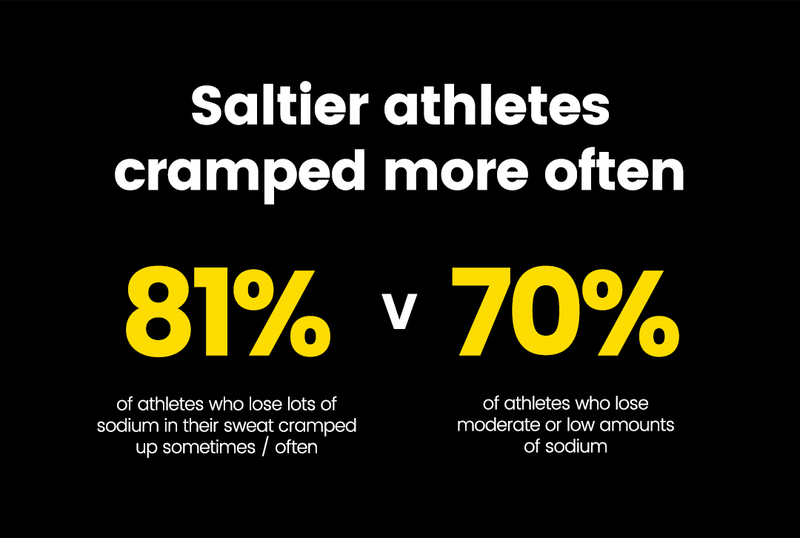
As you'd expect, those issues were exacerbated by hot and humid conditions. This is potentially because such environments increase your sweat and sodium losses, causing you to lose more total fluid and sodium, and increasing the risk of electrolyte imbalance, whilst the rise in core temperature puts your body under more stress.
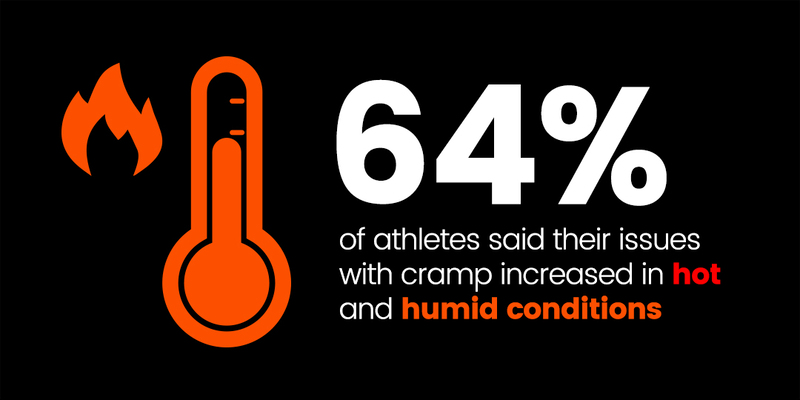
6 solutions for overcoming cramp
It proved to be a race-ending problem for 19% of our cohort.
For those who were able to push on, 70% said cramping had a negative impact on their finishing time.
Another Toronto Blue Jays star, Munenori Kawasaki, also went viral when talking about cramp. Whilst he claimed that bananas are his solution for avoiding cramp ("Monkey never cramps"), our survey highlighted the fact that there's often no single 'magic bullet' (not even bananas!) to help you defeat cramp...
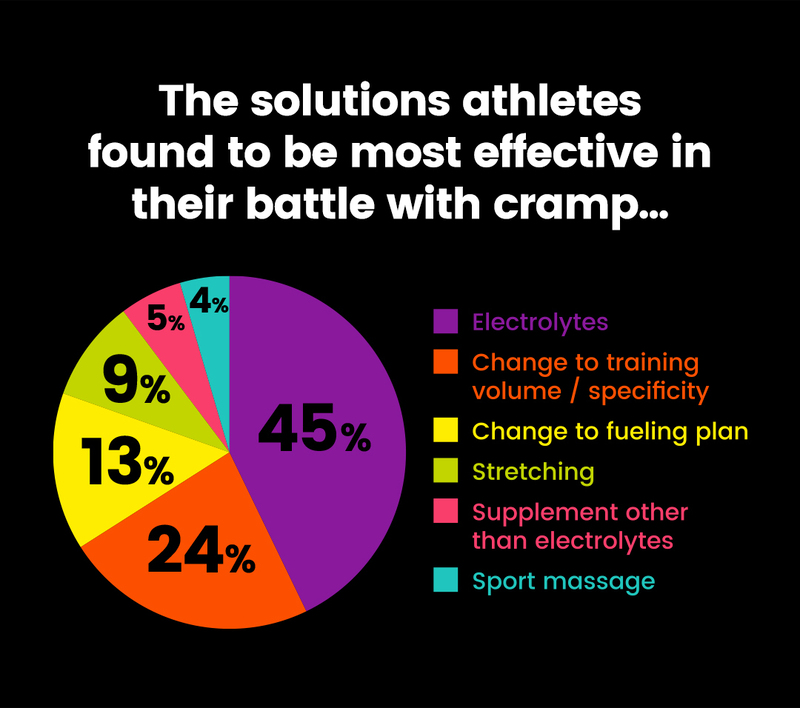
1. Electrolytes
Nearly half of athletes (45%) said that electrolyte supplements had the most positive impact on their cramps.
It's worth mentioning that many of the survey respondents likely took the survey because they found out about PF&H when looking for stronger electrolytes to resolve their issues with cramp, and have since found PH 1500s to be a useful solution.
Still, three-quarters of athletes who've cramped in the past and used our stuff said that PH electrolytes had the most positive impact on their cramping issues.
2. Increase training
A quarter of athletes found that increasing training specificity or volume had the most positive impact.
Finding a balance with your training volume and focus is important though, and Andy's written about the value of avoiding the dangers of overtraining.
3. Increase carb intake
13% of athletes said that increasing their carb intake during exercise helped them overcome cramps.
This makes intuitive sense as consuming sufficient carbs per hour during exercise will help delay your time to fatigue.
Plus, carbs increase the absorption rate of drinks and can help you hydrate faster.
4. Stretching
8% said that stretching helped them overcome their cramps.
Sports Injury Specialist Lawrence van Lingen shares movement exercises and stretches to help you overcome leg issues.
5. Other supplements
5% believe supplements like pickle juice had a positive impact.
They're not always the easiest to get down the hatch, but Andy explains why they might work for some.
6. Sports massage
4% of athletes said sports massage helped alleviate their cramping issues.
Read more about the efficacy of alternative recovery tools.
